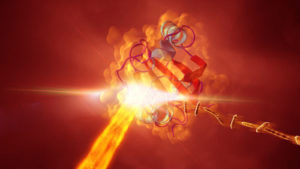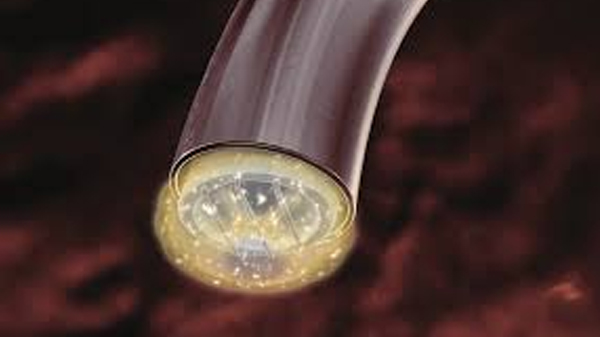Our Core Surgical TechnologyAn overview: RF-Plasma
Laser ablation is used for the excision of tissue in surgical interventions. The energy from photons is first transferred to electrons of the solid body (organic molecules). During this phenomenon the electrons can reach high temperatures, which induces thermal vibrations within the atomic nucleus. In turn, this forces the electrons to leave the solid body, inducing the Coloumb repulsion of the remaining positively charged ions.

On a cellular level, the latter manifests itself in form of tissue ablation. In our minimally invasive treatment unit, a pulsed diode laser beam is emitted and guided via an optic fibre into the body. In contrast to constant laser emission, the pulsed method counters the destructive build up of thermal energy and minimises damage to healthy tissue.
The use of specified wavelengths enables more targeted ablation of certain tissues. Wavelengths of around 980nm are particularly effective in highly hydrated environments, which makes it suitable in PLDD interventions on spinal discs.
Wavelengths of around 1470nm are also absorbed in highly hydrated environments (e.g. vascular walls), and to a lesser extent in haemoglobin-rich environments. This makes it particularly useful in phlebological surgeries. Additionally, the absorption spectrum of saline allows for more effective cooling during laser treatments against varicose veins.
RF-Plasma 
RF-Plasma ablation (aka low-temperature plasma excision) is a controlled, non-thermally driven procedure. RF-Plasma is a form of high-frequency electrosurgery in which radiofrequency (RF)-energy passes through a conductive medium (e.g. saline) between two active electrodes, producing a focused plasma field. The plasma field contains enough energy to disrupt molecular bonds in organic tissue. The tissue is ablated at relatively low-temperatures of 40 ° – 70 °C.

The RF current does not pass through organic tissue directly, which prevents the tissue from overheating. As result, this allows for volumetric excision of target tissues with minimal damage to surrounding, healthy tissues.
During ablation the high voltage is applied to the conductive medium (e.g. saline), which forms a type of barrier between the electrode and the target tissue. The high voltage transforms liquids into an ionised vapour layer (plasma).
This plasma contains charged ions, which are kinetically charged and essentially break up the molecular bonds found in organic tissue. This causes organic molecules to break down into more smaller constituents such as carbon-based molecules and gases, which are largely cleared from the surgical site via integrated suction built into our surgical devices. Overall, this creates ideal conditions for minimally invasive surgical interventions.





